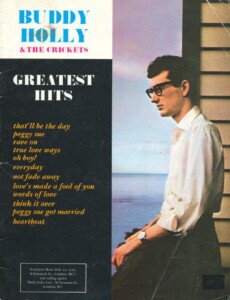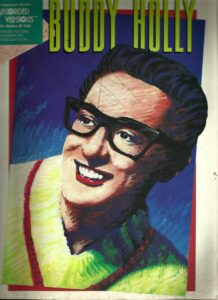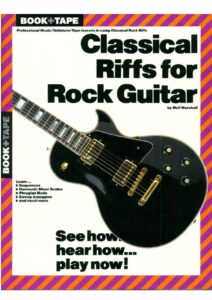Table of Contents
Buddy Holly and the day the music died (Feb. 3, 1959).
Charles Hardin Holley, better known as Buddy Holly, was born on September 7, 1936 in Lubbock, Texas. Holly, of Welsh ancestry and India Cherokee blood, grew with country music and Protestant hymns and at five years of age had already won a song and violin contest. At the end of World War II his brother Travis, who returned from fighting the Japanese, bought a guitar before arriving home and with her Buddy began taking music classes.

Best Sheet Music download from our Library.
The younger brother beat the older on the guitar in a matter of months of months . He had the influence of singers such as Hank Williams, Mahalia Jackson, spiritual music and gospel. It is no secret that Buddy Holly, in addition to feeling inspired by black musicians, wanted to copy his style.
This is reported by Ellis Amburn, author of the musician’s biography. During the years of segregation, Buddy Holly was a racist teenager like the majority of the southern population of the United States. However, when R&B and Bluegrass began to listen, the supposed superiority based on skin color began to question, because I knew that these black musicians were, however much, more talented than him. It was with the music of Fats domino He chose his musical path. When a friend made him listen to ‘Goin’ to the River ‘, Buddy Holly decided to mix his passion for country with R&B music, despite being a discriminated genre for being played by blacks.

Please, subscribe to our Library.
If you are already a subscriber, please, check our NEW SCORES’ page every month for new sheet music. THANK YOU!
The result was a success. Buddy Holly did not live as the Geek boy who appeared to be. Nor did his conservative environment of the fifties lived in the decade.
From Buddy Holly high school he disobeyed his parents and smoked and drank with his friends. Some former teammates remember that he even stole in stores and ‘persecuted girls’. According to Ellis Amburn, his first sexual encounter was a collective rape in which he participated with one of his high school friends, a boy named Tinker Carlen, who said this years Later, all started a night in which they saw a girl who wore shorts and a top. According to the journalist’s story, ‘the most experienced boys took the girl one by one’, and when it was Buddy’s turn, who was still a virgin, he had to ask how to do it.

However, Buddy always sought a spiritual guide and although although The church to which he was attached was supremacist, racist and homophobic, he wanted to separate from those labels. He also sought guidance in his older brother Larry, after his father left his family.

Come join us now, and enjoy playing your beloved music and browse through great scores of every level and styles!
Can’t find the songbook you’re looking for? Please, email us at: sheetmusiclibrarypdf@gmail.com We’d like to help you!
‘The situation would have long -term consequences for Buddy, who would make the mistake of trusting people with strong Music and managed to have a space in a broadcasting in which he played live songs. It was so that it became a local star. When Roy Orbison, a young musician who had his own television program, saw the popularity that Buddy had among the girls, regretted judging him for his glasses. Mutual followers became and they soon collaborated by writing songs. Buddy Holly taught Orbison a trick on the guitar that consisted of dragging his hand on the ropes, and which would later mark his most famous song, ‘Pretty Woman’ with his memorable sound.

The renowned Disc Jokey, Alan Freed, said that Buddy was always in a hurry and wanted to be the first person to get wherever he went. Thus, he was inspired to write one of his flagship songs, ‘Peggy Sue’, in honor of a woman with whom she crashed to run from one stage to another. He told her that she couldn’t stay to help her, but she was truly beautiful. At the end of the concert he realized that the girl was a girlfriend of her bassist, Jerry Allison.
Another proof of her precipitated modus vivendi is the way she met his wife. It was a day when Buddy was recording in a New York label. María Elena Santiago was supplying the receptionist and the musician invited her to a meal that became dinner, and dinner became a marriage request. The couple married Lubbock on August 15, 1958 and went to their honeymoon in Acapulco along with Peggy Sue and her husband, the bassist.
At the end of 1958 Buddy traveled with Maria Elena to Lubbock, but in the new year she had to leave their home to go on tour again. His wife wanted to go with him, but she was pregnant and she didn’t feel very good. Buddy told her that when he returned he would open a musical study so as not to depend more on his manager and that they would live between London, New York and Lubbock.

One of the dates scheduled for the tour did not come according to what was expected, due to bad weather. Tired of sleeping badly and not having clean clothes, Buddy Holly booked a plane to take him directly to Iowa, where he would have his next presentation.

All the musicians cited in that place were having a bad time for the cold weather, it was such that a drummer had to be hospitalized by hypothermia. Thus, Buddy Holly agreed to supply him in the Ritchie Valens. That February 3, the plane in which Iowa was traveling from North Dakota struck by a snowstorm and when crashing, the crew and the pilot died immediately. Buddy Holly lives, 22 years old, together with Ritchie Valens, 17 and The Big Boo had ended abruptly.
The date was recorded as ‘The day the music died‘, because Don McLean described in his song Valens In that version of the Actsjohn Allsup he was Buddy’s musician and should have climbed that plane, but Valens asked him to give his place on the plane. They decided with a ruffing in which Valens chose face and ‘won’ on February 7, 1959, Lubbock paid tribute to Buddy Holly as part of his funeral, which was attended by more than a thousand people, worse among them was not Maria Elena, as she had suffered an abortion.
Buddy Holly turned rock and roll, the R&B and Country mixture, a pleasant sound for younger generations at the time and acceptable for conservatives. Although it is still discussed if that day the music died, but it is true that it marked the end of that air of naivety that weighed on the Golden Boys and the bands of that time.
Buddy Holly Discography (on Wilipedia)
Buddy Holly recorded under several names and with several different backing bands. The Crickets played on almost all of his singles in 1957 and 1958.
Holly recorded prolifically before his death in a plane crash on February 3, 1959. He released three albums in his lifetime. Coral Records was able to release archival new albums and singles for 10 years after his death, but their technical quality was mixed, some being studio recordings and others home recordings.
Holly’s records were promoted after his death and had a loyal following, especially in Europe. The demand for unissued recordings by Holly was so great that his producer, Norman Petty, resorted to overdubbing whatever he could find: alternate takes of studio recordings, originally rejected masters, “Crying, Waiting, Hoping” and the other five 1959 tracks (adding new surf-guitar arrangements), and even Holly’s amateur demos from 1954 (in which the low-fidelity vocals are often muffled behind added orchestrations).
The last new Holly album was Giant (featuring the single “Love Is Strange”), issued in 1969. Between the 1959–1960 overdubs produced by Jack Hansen (with vocal backings imitating the Crickets’ sound), the 1960s overdubs produced by Petty, various alternate takes, and Holly’s undubbed originals, multiple versions of the same songs are available. There are also many different versions of Holly’s Greatest Hits as well as covers and compilation albums of his songs performed by various artists. Many singles and albums of his material have been released posthumously, beginning with “Peggy Sue Got Married” in July 1959 and the successful 6-disc collectors box set Not Fade Away: The Complete Studio Recordings, 50 years later in 2009.
Buddy Holly Greatest Hits Full Album ~ Best Songs
[00:00:00] – 01. T̲ha̲̲t’ll B̲e̲̲ T̲he̲̲ D̲a̲̲y [00:02:14] – 02. P̲e̲̲ggy S̲u̲̲e̲̲ [00:04:42] – 03. T̲ru̲̲e̲̲ L̲o̲̲ve̲̲ W̲a̲̲ys [00:07:26] – 04. M̲a̲̲ybe̲̲ B̲a̲̲by [00:09:26] – 05. L̲i̲̲ste̲̲n T̲o̲̲ M̲e̲̲ [00:11:46] – 06. O̲̲̲h B̲o̲̲y [00:13:51] – 07. E̲̲̲ve̲̲ryda̲̲y [00:15:56] – 08. T̲ru̲̲e̲̲ L̲o̲̲ve̲̲ W̲a̲̲ys
Browse in the Library:
Or browse in the categories menus & download the Library Catalog PDF:
